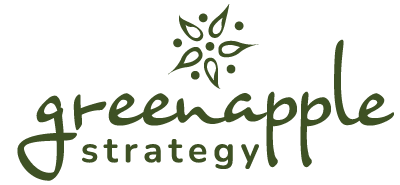“Was it a successful event?” can be one of the hardest questions for marketers, sales professionals, or business owners to quantify. Whether you’re sponsoring a tradeshow, marketing, or hosting a VIP gathering for your customers, it can be difficult to track the impact of the event. Many times, the impact may not be immediately measurable. In some cases, a company might not have the right tools or resources to measure ROI. Despite these challenges, businesses and nonprofits need to measure the ROI of their events.
At Green Apple, we’ve had the opportunity to plan and execute dozens of events for clients over the years, and we know that measuring the ROI of an event can be somewhat ambiguous. As challenging as it may be, finding a way to evaluate your efforts is equally important to help you understand the effectiveness of your event marketing efforts and make necessary improvements in the future.
4 Keys to Measure the ROI of Your Event Marketing Campaigns
Here are four important best practices for measuring the ROI of your event marketing campaigns:
Define ROI, Objectives, & KPIs
Every event has unique goals, and these translate into specific KPIs. For example, a product launch event might focus on lead generation, while a milestone celebration aims at enhancing brand loyalty. The first step to evaluating the ROI of an event is to identify KPIs that align with the event’s purpose and tailor your measurements accordingly.
We’ve added a few potential KPIs below that can be used to track the right metrics based on what you’re hoping to achieve.
Identify Pre-Event Goals, Monitor and Adjust Expectations Accordingly
The overall success of an event is dependent on numerous factors — many of which occur before the event happens. For example, the number of people who RSVP will dictate the number of leads you generate. If you want to measure the impact of your event, you need to know where you started. Collect relevant data before the event, such as RSVPs and registrations, media interest, and email opens and click-through rates. This baseline will help you quantify changes post-event.
Measure Event Success with a Variety of Metrics
An event can have multiple goals. That’s why it’s important to use a variety of metrics to get a comprehensive view of your event’s success. You should prioritize 2-3 key goals for the event. This will help you determine which metrics are most important to track. It will also provide a more comprehensive perspective on the overall success of the event to determine the ROI and make necessary improvements for future events.
Gather Qualitative Feedback in Addition to Data
The qualitative feedback — from attendees and your internal team — is also a valuable asset when evaluating ROI. Set aside time for all of the stakeholders to conduct a post-mortem after the event. You can also collect feedback from the attendees through surveys, interviews, and social media analytics. The feedback they offer can help you understand what they liked and disliked about the event so that you can identify areas where you can improve in the future.
Possible KPIs and Metrics to Measure Your Event Marketing Campaign
With these best practices in mind, here are some various KPIs and metrics you can use to measure the ROI of your event marketing campaigns based on your overall goals and objectives:
Lead Generation and/or Conversion
For events with lead generation goals, track the number of new leads acquired during and after the event. Be sure you have a process to follow these leads through your sales funnel and calculate the conversion rate.
Metrics to Consider:
- Follow Up Meetings
- Specific Leads
- Conversion Rate (compared to other tactics)
- Upsell or Cross-Sell Opportunities
- Follow Up Engagement
Customer Loyalty & Delight
For events aimed at retaining existing customers or enhancing customer loyalty, a significant increase in repeat business can be attributed to the success of your event. This can be measured by gathering feedback from attendees or identifying any new business conversations that arise from an event.
Metrics to Consider:
- Number of Attendees
- Customer Feedback / Surveys
- Social Media Mentions & Engagement
- Upsell or Cross-Sell Opportunities
- Loyalty Program Sign Ups
- Post-Event Content Consumption
- Referral Metrics
Here’s one of our favorite tools for gathering customer feedback.
Media Exposure & PR Impact
For PR-focused events, you want to monitor media coverage and mentions. Any surge in positive media attention is valuable, but it’s important to measure the increase in media exposure and compare it to your baseline.
Metrics to Consider:
- Media Mentions & Coverage
- Press Release Metrics
- Impressions & Reach
- Influencer Engagement
- Online Visibility (Digital & Social Media Reach / Interactions)
- Post-Event Coverage
Eliminate the Guesswork of Event Marketing
Defining how you’re going to measure your return on investment is one of the most important best practices for event marketing. With a clear plan, strategic KPIs, and a commitment to learning from each event, you can transform anecdotal feedback into measurable success.
At Green Apple Strategy, we’ve honed these practices through our extensive expertise, creating unforgettable experiences through event marketing with quantifiable impact.
We invite you to check out more best practices for event marketing or reach out to our team if you need help planning and executing an event that is a worthwhile investment for your business.


